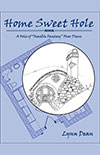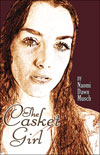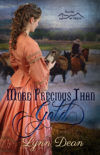“Showing vs. Telling”
We’ve written much about this concept of using vivid action, description, and dialogue to show what’s happening in a story rather than simply telling readers about what happens.
It would be fitting, perhaps, to “show” you an example.
Below is the first paragraph of a scene in my work in progress (wip), More Precious Than Gold. Eliza is my heroine. The town’s doctor is in jail, and Eliza’s father has just been shot by an intruder who wandered into their home after a riot. Here’s how it appeared before the final edit.
Before:
A neighbor heard the shot. An eternity passed before he returned with a doctor, but Eliza understood. One was in jail and another in hiding as an accomplice. Who knew where the sympathies of the town’s other physicians lay? She didn’t ask, and she didn’t care at that point. Stanching the flow of blood was of paramount importance.
Do you see how this paragraph “tells” you about what’s happening? You can almost hear the writer (um…that would be me) narrating the story. I “tell” you that the neighbor heard the shot. I imply that he went for a doctor and “tell” you that it took a long time. While there’s nothing particularly wrong with that, it’s just not very interesting. There’s lots of potential tension in this scene. It would be so much better to “show” the action as it unfolds, allowing readers to see through the POV (point of view) character’s eyes. Look what I did with it.
After:
Eliza snatched a shawl from the hall tree and pressed it to Papa’s wounds as she cradled his head in her lap. The door creaked open, squeezing them against the wall. She stifled a cry and leaned forward, shielding him with her body.
It was only a neighbor. “I heard a shot. Do you . . . oh, Lord! I’ll get help.”
An eternity passed before he returned with a doctor in tow, but Eliza understood. One was in jail and another in hiding as an accomplice. Who knew where the sympathies of the town’s other physicians lay? She didn’t ask, and she didn’t care at that point. Stanching the flow of blood was of paramount importance.
There are still some “telling” sentences, but they center on Eliza, setting the scene for new sentences that play up the action (snatching the shawl, pressing it to the wound) and emotion (trying not to scream, shielding the victim) or the sensory aspects of the scene (the creaking door, feeling squeezed).
The vilest offender in the early version of this paragraph was the first sentence where I “told” you the neighbor heard the shot. If I’m writing from Eliza’s POV, she could only assume this, at best. Look how much more interesting it is to convert that sentence to dialogue that shows the same information, Eliza’s relief, the neighbor’s alarm.
Exercise:
Use my original paragraph of choose one of your own that seems to buffer the action by “telling” it. Using vivid action verbs, sensory elements, and dialogue, experiment with ways you could “show” the story unfolding.
p.s.—Papa doesn’t die, so you can breathe easy.
p.p.s.—I have done so many edits on this wip that I have lost count. This isn’t unusual for a professional writer. Hemingway rewrote the last chapter of The Old Man and the Sea 40 times before he was pleased with it! Writing is a tedious job, but every improvement moves the story from “good” closer to “excellent.”
















Very helpful! I actually shuddered at “The door creaked open, squeezing them against the wall”. Eliza stopping herself from crying out is very emotional. Thanks for sharing.